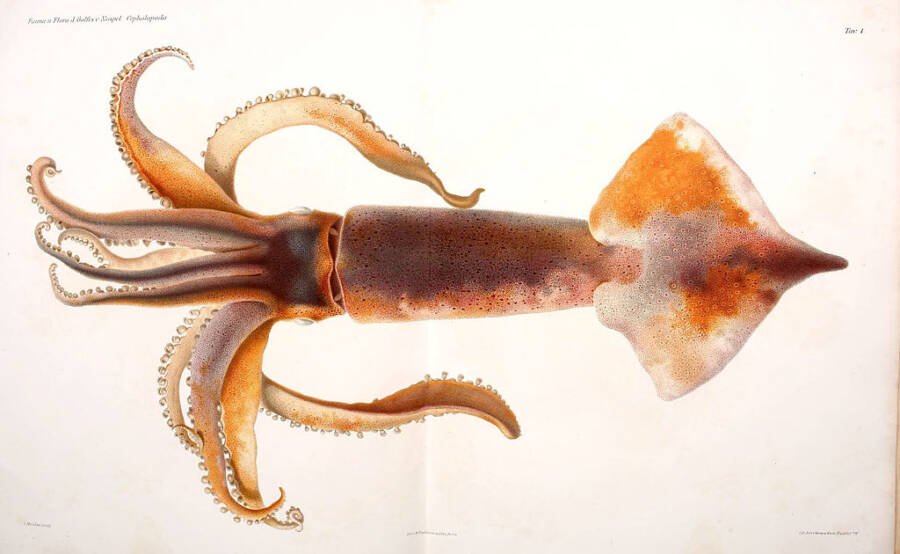Divers exploring a shipwreck share video of encounter with enormous alien-like egg sac
The deep seas reveal the most alien-looking life we will ever have without leaving Earth. Over and over. This was exactly the case at the recent water dive in the vicinity of Ørstafjorden, Norway.
While discovering a shipwreck of the Second World War, according to the BBC, sailors were on their way back, when they stumbled upon a mysterious translucent orb floating just 50 feet above the ocean floor.
At first sight, the giant blob looking totally alien, with a tissue-like material inside it — as large as the strange divers swimming around it — looks. One of the researchers documented the strange encounter on video.
As it turned out, the otherworldly-looking object was actually a giant squid egg sac.
In the two-and-a-half minute recording of the encounter, divers Ronald Raasch and Nils Baadnes can be seen curiously circling the enormous ball, which appeared translucent in the cloudy water.
As they inspected the orb closer, they shined their flashlights onto the surface of the object’s exterior — illuminating the silhouettes of the swarms of tiny, maggot-like creatures wriggling around inside. The egg sac was likely carrying thousands of baby squids.
The official account for the researchers’ REV ocean vessel tweeted out the full video of the encounter, complete with the divers’ conclusions about the strange-looking orb: “#Mysterysolved! Captain Baadnes & Ronald Raasch discovered this giant gel ball while diving in Orstafjord, which is actually an eggmass of 10-armed.”
These egg masses are very rarely glimpsed because the sacs fill up with water and sink down toward the bottom of the ocean floor, where it is difficult for divers to reach.
But this latest sighting in the deep waters off the shores of Norway isn’t the first time that marine researchers have unexpectedly crossed paths with these giant jelly nurseries.
In 2015, squid expert Danna Staaf captured her encounter with a 13-foot-wide red flying squid egg mass while diving in the Gulf of California. In the subsequently-released study, Staaf noted that the giant egg sac likely functioned as a protective shield for the squid embryos inside it, keeping them safe from predators and parasites.
“We know that mama squid has these special glands in her body that make jelly and she mixes that jelly with her eggs in some way,” Staaf explained in a video published by National Geographic.
“And it’s concentrated. So when she produces it, it’s just a concentrated ball of snot with eggs in it, basically. We don’t know exactly what the chemicals are but they have some reaction, some ability to absorb water and expand in water. And we’ve all seen artificial chemicals like that… but this is just nature’s version of that.”

The elastic nature of the egg sac is also believed to help maintain enough space between each squid embryo so that each egg can get enough oxygen to somehow support the development of the baby squids.
When Staaf and her team tried to grow young squid inside the laboratory using in vitro fertilization, the embryos — grown without the protective egg sac from their mother — became infected and were unable to mature properly.
One unsolved question still remains from Baadnes’ and Raasch’s recent egg encounter: Which species of squid did the egg sac come from? Although the REV account attributed the eggs to a “10-armed squid,” there are no known squid species with that many tentacles.
It’s difficult to pinpoint which species may have laid the giant egg sac. For one, several different species lay their eggs inside similar jelly-like protectors. The egg sacs between different species aren’t easily distinguishable simply by looking at them, either.

Some possible species known to live in the Norwegian waters are the Boreoatlantic armhook squid (Gonatus fabricii) and the European flying squid (Todarodes sagittatus), but we’ll never know for sure where this enormous egg mass came from.
There is much that scientists still don’t know about these elusive sea creatures and how they breed, and the little we know about these animals might as well make them alien to us after all.





